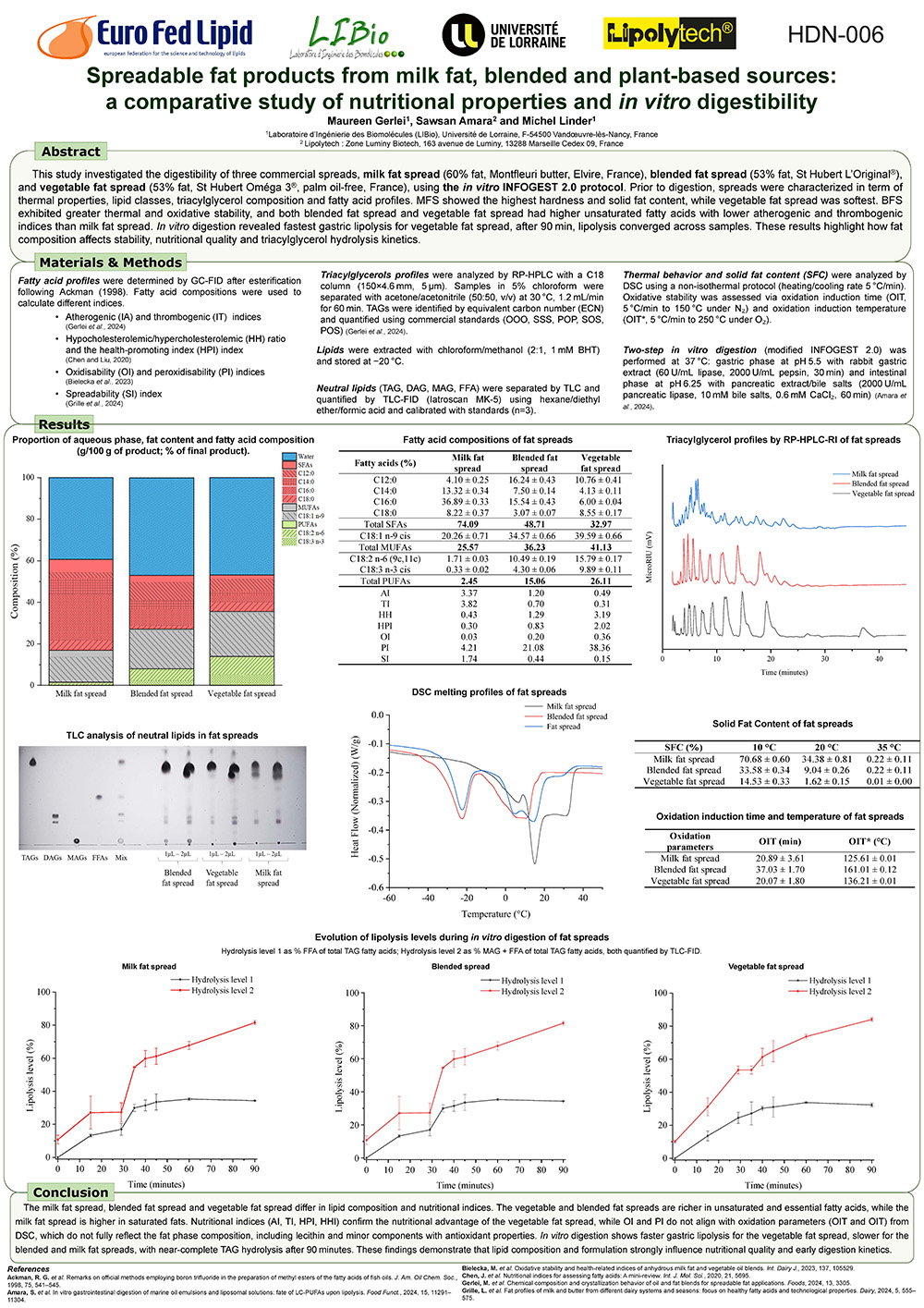Spreadable products are widely consumed in Europe, playing a significant role at both breakfast and in culinary applications. They are used not only as cooking fats but also as ingredients in various food formulations. This study focuses on the comparison of high-fat spreadable products, including a plant-based spread (52% fat), a blended fat spread (52% fat), and a reduced-fat butter (60% fat). Firstly, physicochemical, thermal, and textural characterizations were performed. The physicochemical analysis focused on lipid profiles, including triacylglycerol composition, lipid classes, and fatty acid content.
Based on fatty acid composition, several nutritional indices such as the Atherogenicity Index (AI), Thrombogenicity Index (TI), Hypo/Hypercholesterolemic ratio (HH), and Health Promoting Index (HPI), as well as oxidation indices including the Oxidisability Index (OI) and Peroxidisability Index (PI), were calculated. Spreadability index (SI) was also evaluated. Thermal characterization included melting/crystallization temperatures, Solid Fat Content (SFC) and oxidation parameters such as Oxidation Induction Time (OIT) and Temperature (OIT*). Texture measurements revealed further differences in mechanical properties among the products. Secondly, the digestive behavior of the three products was compared in vitro following the standardized INFORGEST 2.0 protocol. Hydrolysis kinetics were monitored during the gastric and intestinal phases, along with the overall extent of lipolysis at the end of the digestion. The results demonstrated significant differences in both textural and nutritional properties among the products. Moreover, the initial digestion kinetics varied, the final lipolysis levels converged by the end of the gastric phase were similar.
